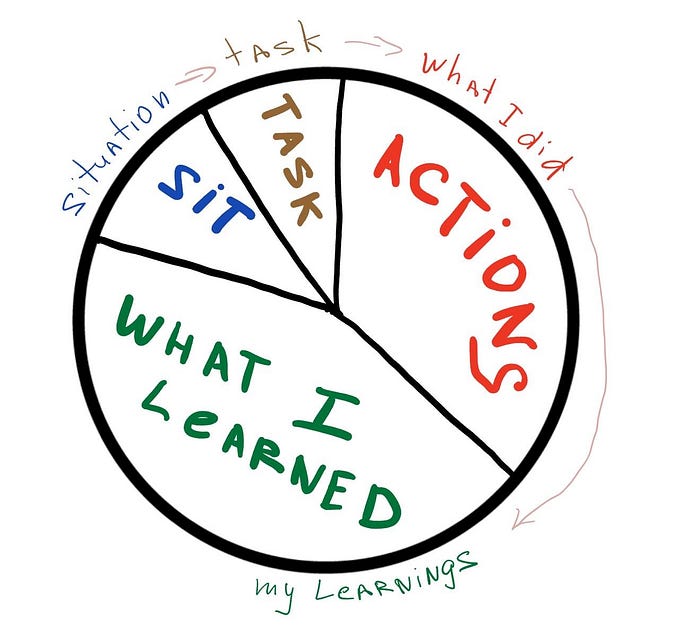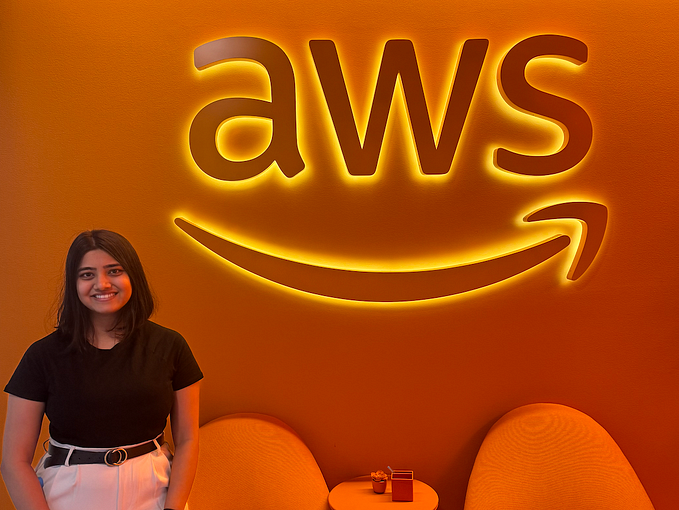PM Interview Frameworks
In the past couple of years, I’ve gone through interviews with 84 different companies. Interviewing is hard, exhausting and challenging. Yes, it is a numbers game, but I’ve found you get better through practice, and putting some structure and framework to your responses.
I’ve done my share of practice: Decode and Conquer, Cracking the PM Interview, The Product Manager Interview, Swipe to Unlock, countless YouTube sessions, and 33 practice sessions with friends and interviewees. As I started going through the rounds, besides noticing familiar questions, I began to see structured responses that interviewers were expecting. I’m sure you are familiar with frameworks like CIRCLES, DIGS, STAR, PAR, SOAR, but I started tweaking them based on the companies. I created interview canvases for different PM interviews.
Sharing it here to those who may find helpful. You can use them when you’re practicing, they helped me frame my process better. After all, these interviews are subjective/relative to the company culture and role.
I’ve generally seen 8 types of interviews. For every interview, never answer the question right away. Always clarify, and restate the question to make sure you and the interviewer are on the same page. Also, most of the times interviewers lay out a general format: “I’ll be asking 2–3 questions, and then will save time in the end to respond to your questions”. You may also ask this to your Recruiter, and if you are still unsure, then you can always slip it in “Here’s my general approach (state your approach), but I also want to make sure we have time for all your questions, so let me know if you wanted me to skip through any of the steps”. As PMs, ABC: Always Be Communicating. So best to set expectations from the get go.
Design/Product Sense
Typically 1 design question per interview. You may get asked multiple. After clarifying the question, and your process, start with the Mission of the company, and see if the problem aligns with the mission and strategy of the company. If its not company related, e.g. design a solution to solve the dog poop problem, then no need to dive into the Mission.

But you should be thinking about if its a problem worth pursuing and why. Once you’ve isolated the problem, think about the different user segments (mutually exclusive groups) who could be using. Slice them by behaviors and actions. Demographics alone(age/gender/location) generally are considered weak segments, so really try to dissect them, and more importantly think of your users as people. Empathy is key. From your list of users, next prioritize the segment you want to focus on: You can use a framework of your choice, but I used RICE and also considered the competition. Next go deep into their pain points, paint the empathy map: What they see, they feel, they hear, what are their jobs to be done! You can also use the 5 Es for mapping your user journey to think through the problems. Once you have that, prioritize the pain points again, and turn that into your goal. Now based on the goal, come up with 2–3 solutions, if you can, the interviewer is testing your creativity, and your first idea may probably not be your best. And then, choose your solution based on the highest strategic and customer impact, and preferably lowest dev cost for your goal. If there’s time, also talk about how you would test the solutions through UX research. While discussing solutions, also talk about the tradeoffs, you will come across holistic in your approach. And summarize: Based on the goal, my solution is X. Sometimes, I’ve seen discussion around specific use cases, or you may be asked to sketch the solution. Don’t be afraid to embrace it, and also talk about what v2 will look like.
Execution/Metrics
Sample questions “how would you measure the success of X”, “You are the VP of product X, what are your priorities”. Your end goal is to arrive to a North Star metric, but also demonstrate your process of arriving there. And you can never rely on a single metric, so also discuss supporting metrics, how you would measure them, and prioritize. You can use the 5Es to show your understanding of the product. I’ve used the pirate AAARRR metrics, but AARM is also good enough.

And also remember to prioritize your metrics, and ask yourself if they paint the complete story. And finally, would they cannibalize other metrics?
Diagnostics
Diagnostics questions are: “There was a 20% drop in MoM visits for product X. What do you think happened?”. This one is meant to be interactive, so don’t be afraid to ask check in with the interviewer as you are going through the process.

You can also use Issue Trees, each node should be mutually exclusive from the other. Once you’ve identified the issue, summarize your conclusion. You may get a follow up, how can we fix it, so be ready just in case.
Strategic thinking
For Strategic thinking and leadership I’ve seen a couple of flavors of questions. One where they ask you: “Should company do Y?” Example, “Should Airbnb get into the furniture business” and the second one, “Why do you think company X did Y” Example, “Why did Twitter increase their character limit”. They’re both strategy questions, but one is about setting the vision, and the other is about validating it.
For the validation one: doing a SWOT analysis and/or using Porter’s forces are helpful for a sanity check.

And for the vision setting one: There are a lot more things to be considered here. I read about “Are you a seal” and the Toothbrush test, which basically check if the strategy aligns with the goals, and strengths of the company (SEAL test, can this be added naturally) and will this be frequently used (toothbrush used 1–2 times a day). The question can naturally then evolve into how would you build and measure success. So you can use a lite version of the design and execution canvas to respond.

Behavioral
I find these to be the trickiest. My main takeaway was to always use examples. Start by answering the question as if you are writing a 30 sec tweet, and then follow up by “Let me give you the details of what I did”. No big framework in the canvas here, just a quick outline and reminders to stay enthusiastic and succinct.

Most of my interview experiences were focused on design, execution, diagnostics and behavioral. I saw the estimation and technical questions in just a few companies. They can be intimidating, but remember to breathe, stay calm, and articulate your approach. Interviewers are generally very collaborative, and once again your process is more important than the accuracy of your answers.
Estimation
For estimation, start with clarifying, and taking some time to think through the question. Then state any assumptions you will be making, and talk about your rough approach. I found it easier to think of them in components, and estimate them individually. It’s like coming up with a general formula, X,Y,Z, and calculating each, and aggregating them, through an issue tree.

Before you summarize, do a quick gut/sanity check: Do you think it makes sense, and be honest. You can always say, I overestimated/underestimated, as I didn’t consider all the factors.
Technical: System Design
System design questions: No one will ask you to design Google Search, but you may be asked to design a light version of it. Its important to think about all the different components: constraints, use cases, bottlenecks, and scaling.

Once you have a general sense of these, you can get into the details of data models (what are your user tables), what are the main use cases, how would you write RESTful APIs for those use cases, may be even create a rough sketch of the UI, and consider factors around data privacy.
And finally, also evaluate tradeoffs of your design. What impact will it have on the latency or UX?
Algorithms
I wasn’t asked any algorithm questions, but I had prepared with a simple structure of asking clarifying questions, using analogies and solving with an example.

Bonus: Mission statements
As PMs we always start with the why. I created a list of all major companies mission, their users, competitors, and strategy. You don’t have to memorize them, just a gentle reminder of why they exist, and what’s the core problem they are solving for.


Thanks for reading! Hope you find these useful. And Good Luck!








